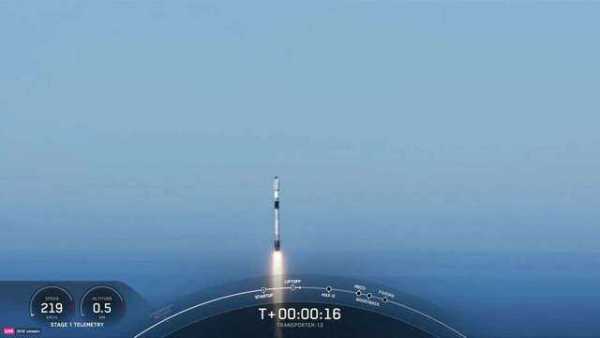
The UAE's most advanced Earth-imaging satellite, , was successfully launched on Tuesday, January 14, at 11.09pm local timefrom the Vandenberg Air Force Base in California, US.
It is the second Emirati-built satellite that was catapulted into the earth's orbit. On board the SpaceX's Falcon 9 rocket, it blasted off with a compact yet powerful CubeSat, HCT-SAT 1.
Among the officials who witnessed the liftoff at the mission control centre in Dubai was Sheikh Mohammed bin Rashid bin Mohammed bin Rashid Al Maktoum, .
With a total mass of 750kg, and dimensions of 3m x 5m, the MBZ-SAT has twice the imaging accuracy of its predecessors, 10 times more imagery, and rapid data delivery.
Equipped with advanced electric propulsion, precise navigation, and a high-resolution camera, it can deliver precision in imaging locations, which supports applications like environmental monitoring, infrastructure management, and disaster relief.
Watch the blast-off moment here:
View this post on Instagram
Following the launch, the first signal was expected to be received after about an hour. Highlighting the tasks that will engage Mohammed Bin Rashid Space Centre (MBRSC) engineers, Mohammad AlBlooshi, Director, Space Operations Department said: “The most important thing will be data transfer and then data processing of the images. The first signal will be received after separation, which is approximately after one hour and 22 minutes."
"There will be no time lag as it’s a low-orbit satellite, approximately 500km above Earth. Each contact would be approximately for 10 minutes," he added.
To launch the satellite into space, MBRSC used SpaceX's rideshare programme. Originally slated for an aboard the company’s rocket, the MBZ-SAT faced delays due to that grounded the rocket.
Launched in 2019, the SpaceX rideshare programme offers a more cost-effective alternative to traditional, expensive launch services. It has already facilitated the deployment of over 200 satellites.
During a press conference last week, Salem Humaid Al Marri, Director General MBRSC said, “We have a team on site (of seven members) in the US and a team here at Mission Control in Dubai working around the clock to ensure everything is ready for the launch.”
The student-built CubeSat project, on the other hand, showcases the UAE’s commitment to nurturing its next generation of space explorers.
Currently, the UAE has 10 satellites in orbit, each serving a different purpose, with another eight satellites being manufactured.
, in collaboration with UAE-based companies has also driven economic growth and knowledge transfer, strengthening the nation's aerospace ecosystem and global competitiveness in space technology.
After it was fully assembled in the UAE, the satellite underwent rigorous scientific testing before it was carefully placed in a specialised container equipped with a monitoring system to ensure its safety during transportation.
“The MBZ-SAT was then shipped to South Korea for environmental testing, carried out in collaboration with the logistical team at the MBRSC,” said Amer AlSayegh AlGhaferi, project manager (MBZ-SAT) during an earlier interview. “Following the successful completion of the mission in South Korea, the satellite was transported to SpaceX in the US for the final testing phase in preparation for its launch.”
MBZ-SAT will now monitor environmental conditions, assess water quality, support the development of agriculture, provide map preparation and analysis, and assist in disaster management efforts.
It will be operated and monitored from the space mission control room at the Mohammed bin Rashid Space Centre.
With 90 per cent of the satellite built by UAE companies, this initiative strengthens the UAE's position within the space industry, promoting deeper collaborations between the public and private sectors.
The space centre collaborated with five domestic private firms to create the satellite, including aerospace manufacturer Mubadala-owned Strata, Falcon Group, Edge Group’s EPI, precision-guided systems maker Halcon, and Rockford Xellerix.
Marri emphasised that it is "a moment of pride for everyone in the UAE", as the country launched two very different satellites at the same time.
In a conversation with last week, Al Marri said: “One which is a very large satellite built over years of experience, and another one which is going back to the core, trying to train students and building their capabilities."
"Through the HCT-SAT programme, we were able to reach pretty much every emirate in the UAE and about 50 students. So that's something that we are very proud of, and we see that as a real part of the overall cycle of getting graduates to come and then participate in the space industry and come back,” he added.
In a dazzling display of innovation and national pride, Burj Khalifa lit up in anticipation of the historic satellite launch. On the evening of January 14, the world's tallest building transformed into a giant projector, showcasing the imaging-satellite orbiting the Earth.